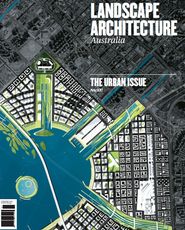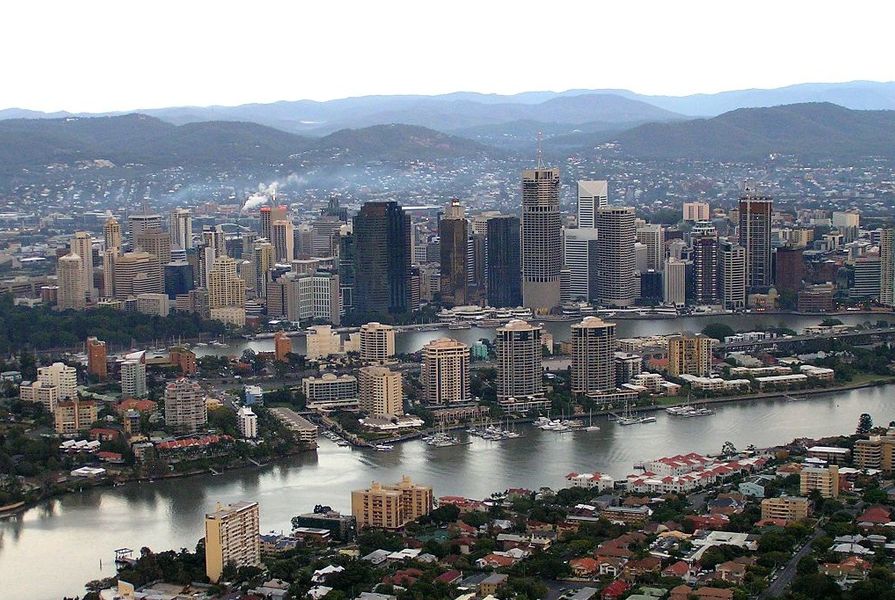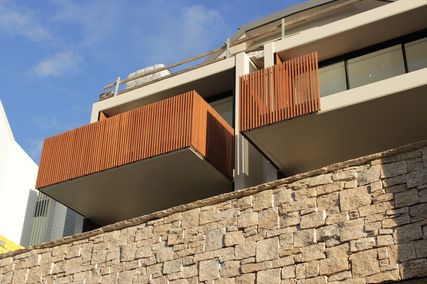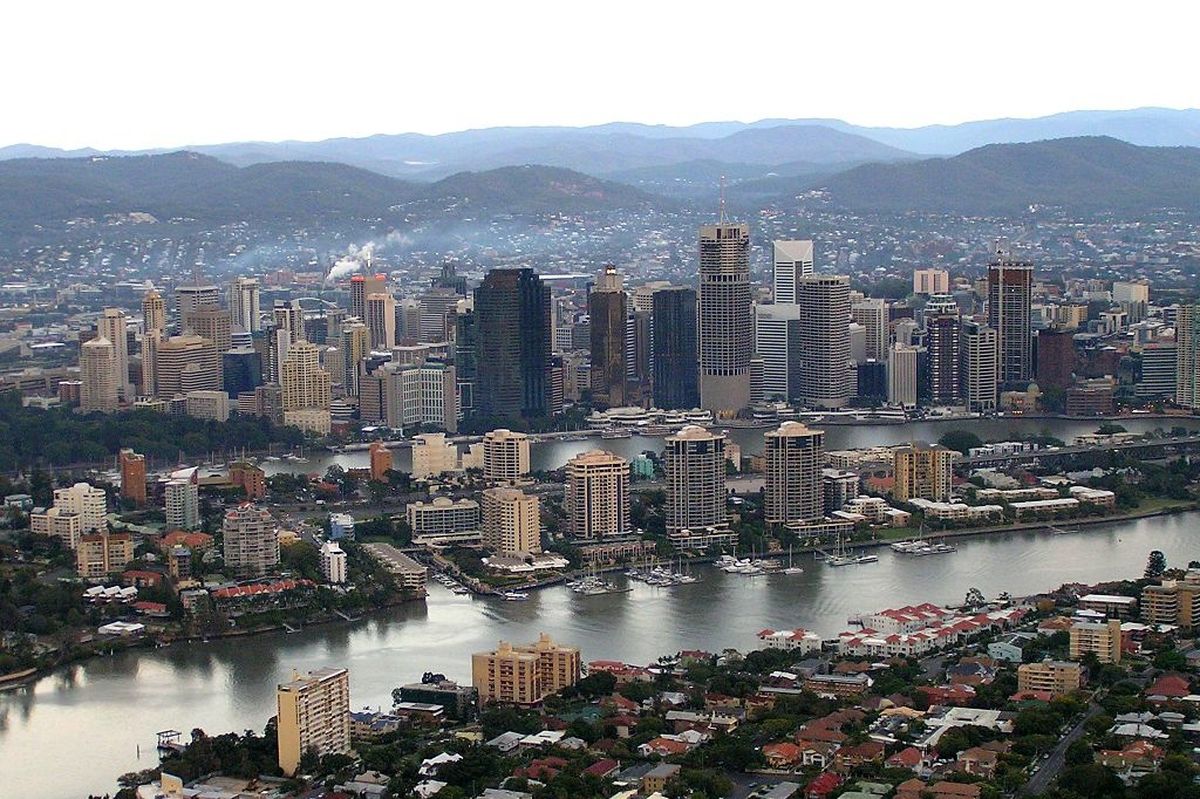Julian Bolleter / Richard Weller: What was your role on the project?

Damian Thompson, Lat27.
Damian Thompson: Lat27 was the lead consultant and designer. The sub-consultant team comprised PSA Consulting, which offers expertise in active transport strategies, and the Centre for Subtropical Design at the Queensland University of Technology, which provided a review of global trends and was a general sounding-board for ideas.
Julian Bolleter / Richard Weller: As a landscape architect what particular skills/perspectives did you bring to the process?
Damian Thompson: Landscape architects are instinctively contextual thinkers. The complex, layered nature of city centres requires the kind of broad, open-minded thought processes that landscape architects possess. This is not only true for the physical attributes of the city but also for the critical systems and people that manage them. It was an incredible experience being able to collaborate with individuals working behind the scenes to keep the city running.
The Brisbane City Centre Public Realm and Transport Study (PRATS) is typical of a complex urban project that spans the spheres of design, process and politics. In this case the project overlapped with similar studies that address built form, transport and urban economics, further emphasizing the critical role that the public realm plays in our city centres.
Julian Bolleter / Richard Weller: How much input did you have into the master/structure planning and policy development for the project?
Damian Thompson: Lat27 was responsible for developing a clear urban agenda for the growth of the city over the next two decades. This could only have resulted from a highly collaborative process and an environment of joint ownership that we enjoyed with the council officers and our project team.
Given the broad nature of the audience for this project, significant energy was devoted to converting complex sets of issues into clearly grouped city centre strategies. It was also considered crucial that the momentum for a number of existing, long-term strategies was sustained during this process. Some of the more straightforward urban strategies, such as those to improve connectivity, have been underway within the council for some time and will ultimately bring huge benefits to the city centre. From my perspective, the challenge for these programs is to ensure that the public realm morphs and adapts to the changing needs of the city, including hosting an ever-increasing program of events.
Another key initiative resulting from the study is a strategy to renew the focus on the Brisbane River as being an essential component of the city centre – not just as an edge, but as a vibrant, multi-layered and integrated destination at the city’s heart.
Some of the detailed spatial and programmatic analysis that underpins the study.
Julian Bolleter / Richard Weller: Were there particular urban design skills you lacked that your landscape architectural education could/should have provided?
Damian Thompson: One of the luxuries of working from a generalist’s perspective (and as lead consultant) is that you can introduce experts as required to support a lack of detailed knowledge in a particular area. Appreciating the benefits of multidisciplinary thinking is certainly something that was a core part of my training at the Queensland University of Technology, and it has remained an important part of how I practise. Dialogue is always preferable to monologue.
I am interested in exploring the field of spatial psychology further, as it has such potential to contribute to our urban design work. As our cities become increasingly contested places, a deeper understanding of how design can help communities respond to the pressures of urban density is essential.
Another area where core studies in landscape architecture could be expanded for urban design practice is into the “black art” of urban economics. So many public realm initiatives could benefit from a better understanding of the complexities of retailing and the commercial drivers that often facilitate urban renewal.
Julian Bolleter / Richard Weller: How did the team respond to you as a landscape architect in the urban design realm?
Damian Thompson: The team stayed focused on finding ways to improve life in the city, so the topic of professional backgrounds didn’t ever surface. Ultimately our own personal and professional histories combine to give us the confidence and experience needed to tackle projects of this nature. Having experienced planner Tony Dickson on the Lat27 team and involved in the project certainly reinforced our multidisciplinary approach.
This is not the kind of project where a particular individual can claim to have all of the answers but the desire to ask a lot of questions goes a long way – and that is certainly a (potentially annoying) trait of our landscape architectural training.
Julian Bolleter / Richard Weller: How could landscape architecture courses better prepare students toplay an effective role in urban design?
Damian Thompson: My view is that landscape architects are incredibly well suited to take on the “honest broker” role needed to balance quality-of-life issues with the pressures of urban growth. Our creative and optimistic dispositions may mean, however, that we rarely find ourselves in leadership roles in urban design projects. I’ve been involved in many student exercises over the last few years and have witnessed the students’ passion and determination firsthand. I am confident our profession will continue to grow as a strong voice for a better and more equitable urban existence.
It is a good news profession: we remediate, reinvigorate and collaborate to better connect our communities with their environments. We see life across such broad social, spatial and time-based spectrums, and we occasionally forget that not everyone thinks as we do. While this breadth sets us apart, if we were better equipped with deeper knowledge of the mechanics of urban centres we could achieve even more.
Project synopsis
Brisbane’s compact, subtropical city centre is at the heart of one of the fastest-growing capital cities in Australia. This unprecedented growth brings with it enormous transformative potential and to this end Brisbane City Council is currently updating the planning framework for the city centre. This study has informed the beginning of this process and focuses on the interrelationship between the public realm and pedestrian/cyclist movement.
Brisbane is emerging as one of the world’s great lifestyle-driven cities with its recent listing by the 2012 Lee Kuan Yew World City Prize as one of the seven most livable cities in the world. This project identifies strategies to capitalize on this momentum – for locals and visitors alike.
—LAT27
Credits
- Project
- The Brisbane City Centre Public Realm And Active Transport Study
- Design practice
- Lat27
Brisbane, Qld, Australia
- Consultants
-
PSA Consulting, The Centre for Subtropical Design at Queensland University of Technology
- Site Details
-
Location
Brisbane,
Qld,
Australia
- Project Details
-
Completion date
2012
Category Landscape / urban
Type Public / civic
Source

People
Published online: 7 Aug 2013
Words:
Damian Thompson
Images:
Cyron Ray Macey
Issue
Landscape Architecture Australia, February 2013




















